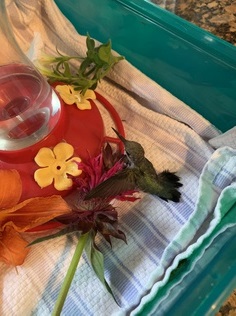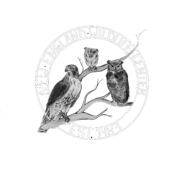Cape Codders love to watch and feed their birds. Most people have a certain species that is special to them, but hummingbirds seem to be special to everyone. I don’t know if it is their diminutive size, their quiet buzzing, or their flitting and dancing. When a hummingbird appears, everyone stops to look and admire it and feels as if a tiny gift has arrived. They don’t destroy property, make noises that wake you up, or fight with other birds and injure them or steal their eggs. They are the perfect houseguest.
Hummingbirds are Massachusetts’ smallest breeding bird. The ruby throated hummingbird is the only species that commonly occurs on Cape Cod. The buzzing noise that you hear as they fly by is from their wings which beat about 53 times per second. A twittering sound can come from their throat. Hummingbirds are migratory birds and are federally protected as a species.
Hummingbirds migrate north in the spring from South America and Mexico up to Canada. It is a solitary journey with the goal of getting to the best feeding territories the fastest. These migrations can begin as early as February in Mexico and arrive in Massachusetts in April. The Fall migration begins as early as late July up north and cross the southern US border by late October. These journeys require tremendous preparation and energy. Right before migration hummingbirds will flock to feeders to boost energy supplies.

The winter is spent preparing for their trip back North in the spring. In November, Ruby Throated Hummingbirds begin to molt. In December, they will gorge themselves on insects and nectar. The feathers begin to come in during January and they again focus on feeding. By February their instincts tell them to fatten up and fly north. The majority leave in March. Thousands of Ruby Throated Hummingbirds fly over the open water of the Gulf of Mexico rather than follow the longer shoreline route. This flight is non-stop of almost 500 miles and takes 18-22 hours to complete.
Migration triggers include changes in daylight duration and changes in the abundance of flowers, nectar and insects. They will gain 25-40% of their body weight to support the journey. The weight will increase from 3 to 6 grams. They fly by day when they can stop at abundant flower sources. They use tail winds to increase speed and conserve resources. Some hummingbirds aren’t strong enough, and take temporary refuge on oil rigs and boats in the Gulf of Mexico. During migration it’s heart can beat up to 1260 times a minute, and wings can flap up to 80 times a second.

Age and sex can have a factor in migration. Mature birds start their migration earlier than juvenile birds. Younger birds may take longer to build up their strength. Males migrate a few days before females. This allows them to establish territories so they can court arriving females. Female can be 25% larger than males.
In the spring, hummingbirds build their nests out of fibers and lichens held together by spider webs. Their nests are about the size of a walnut. They can lay 1-3 eggs, although 2 is most common. Incubation lasts 14-21 days, and then pea sized eggs are formed. The female sits on the nest 55 minutes of every hour. She raises the chicks alone. Chicks fledge in about 5-6 weeks.
Humans Helping Hummingbirds:
The best time to put out feeders is mid-late April, and keep them out until late in the fall so birds have a food source no matter what flowers are blooming. In adverse conditions when no food can be found, hummingbirds enter a special state called torpor. This is similar to mammal hibernation in which their metabolism slows down tremendously. When in torpor, they are difficult to awaken. This also happens at nightfall. They awaken 1-2 hours before dawn. Awakening can take about 20 minutes while it’s heart rate and breathing increase.
Plant flowers to attract them with a natural food source: bee balm, honeysuckle vine, pink turtlehead, phlox, salvia and fuchsia are some choices. They need to eat their own weight in nectar and insects daily to stay alive.
Provide hummingbird nesting material: moss and lichen, plant tufts and fuzz, dandelion and thistle down
In fall, keep nectar from freezing.
Keep feeders clean and replace sugar water regularly, especially during warm weather.
Support conservation initiatives and habitat preservation.
At Cape Wildlife Center we sometimes get injured or stunned hummingbirds and it is always exciting to be able to help these flying jewels.
To learn more about the Cape Wildlife Center or help in their mission, visit www.capewildlifecenter.com or call 508 362-0111.
Caryn Ritchie is on staff at the Cape Wildlife Center and holds both a Massachusetts wildlife rehabilitator’s license and a federal permit to rehabilitate migratory birds.

Recent Comments